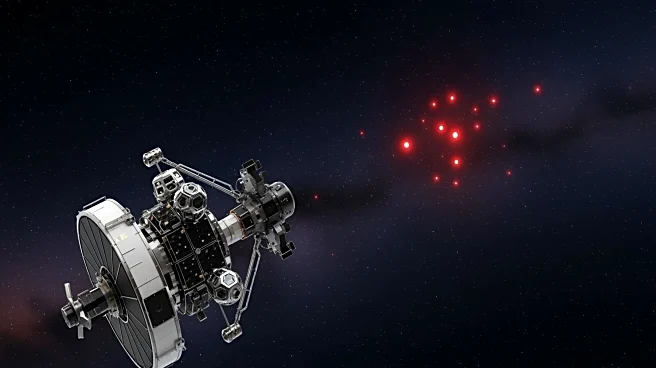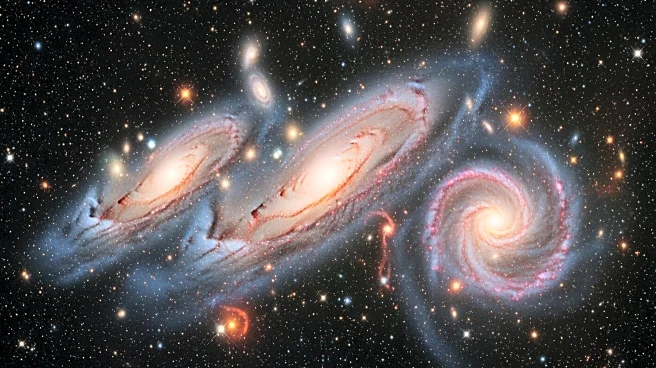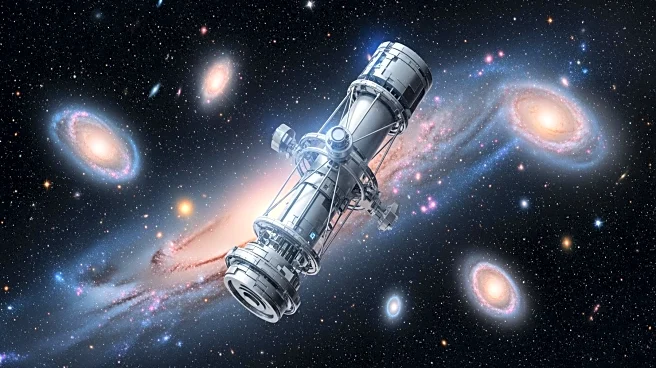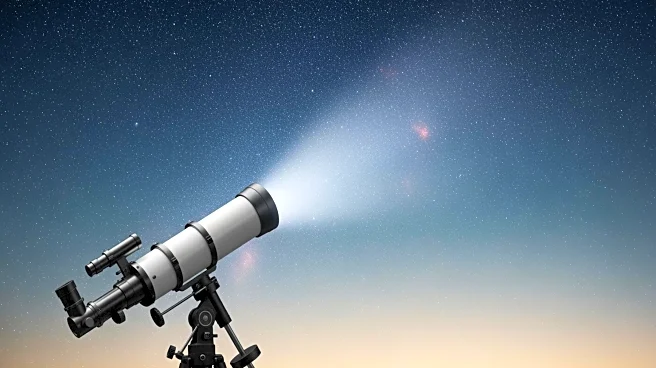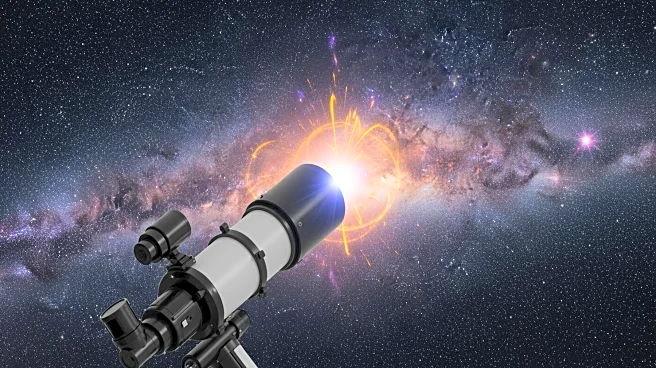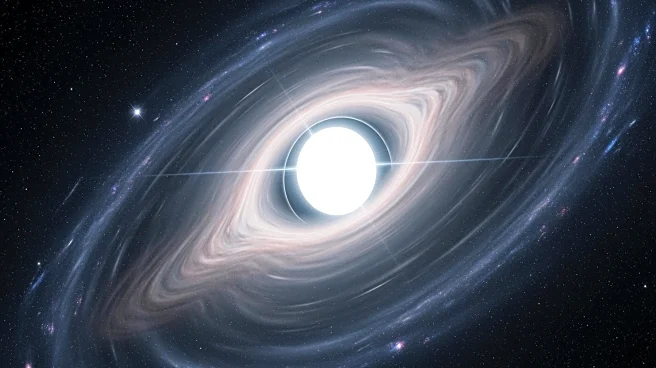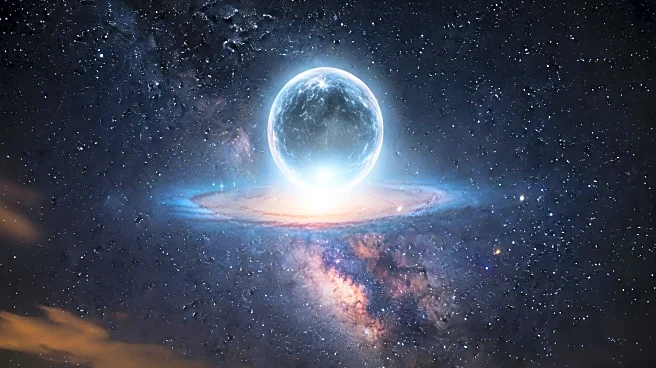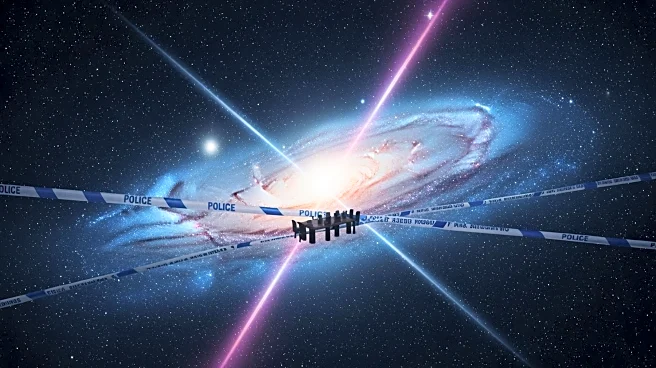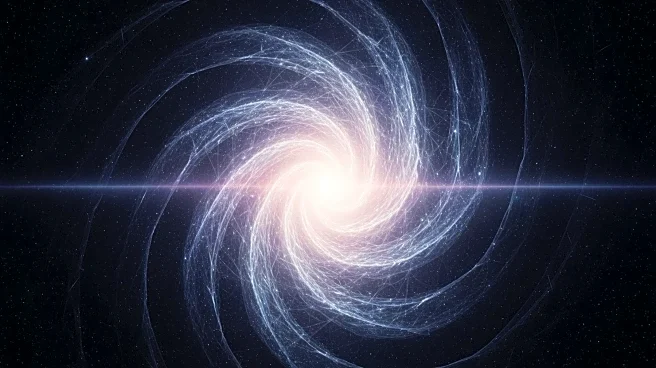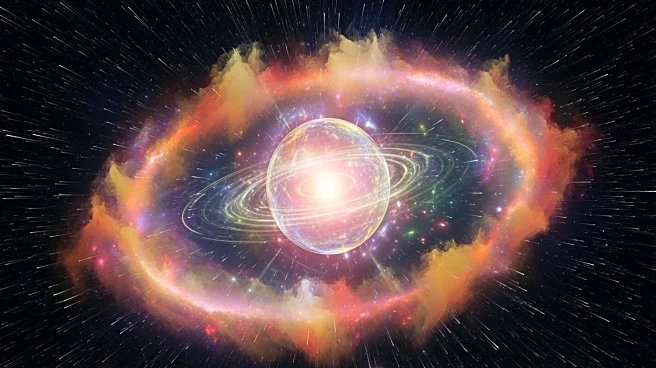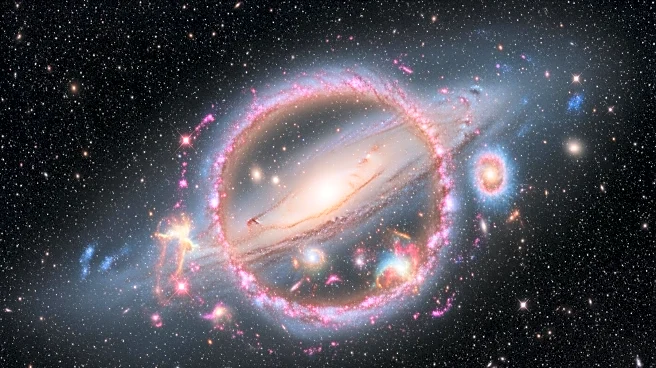What's Happening?
The James Webb Space Telescope has observed mysterious little red dots (LRDs) that were initially thought to be ancient galaxies. However, recent analysis suggests these objects might be cool red stars
potentially hiding supermassive black holes at their cores. Researchers speculate these could be the primordial beginnings of supermassive black holes found in most galaxies. The study, published in Astronomy & Astrophysics, highlights the unusual nature of these LRDs, which appear to be powered by something other than nuclear fusion, possibly a supermassive black hole. The research team focused on one particular red dot, named the Cliff, located 11.9 billion light-years away, which has an atmosphere too thick for a typical star. The study suggests that dense gas clouds might be shrouding the accretion disk, making the black hole invisible.
Why It's Important?
This discovery could reshape our understanding of galaxy formation and the early universe. If these LRDs are indeed early stages of supermassive black holes, it could provide insights into how these massive entities develop and influence their surrounding environments. The presence of supermassive black holes in the centers of galaxies is a key factor in galaxy dynamics and evolution. Understanding their origins could have significant implications for astrophysics and cosmology, potentially altering theories about the universe's formation and the role of black holes in it.
What's Next?
Further observations and analyses are needed to confirm the nature of these LRDs and their potential as supermassive black holes. Researchers will continue to study the spectral energy distributions of these objects to determine their true nature. The findings could lead to new models of galaxy formation and evolution, prompting additional studies and observations using advanced telescopes and instruments.
Beyond the Headlines
The study raises questions about the nature of stellar atmospheres and the processes that could mimic the appearance of stars while hiding black holes. It challenges existing notions of star formation and the lifecycle of celestial bodies, potentially leading to new theories about the universe's structure and the role of black holes in cosmic evolution.
